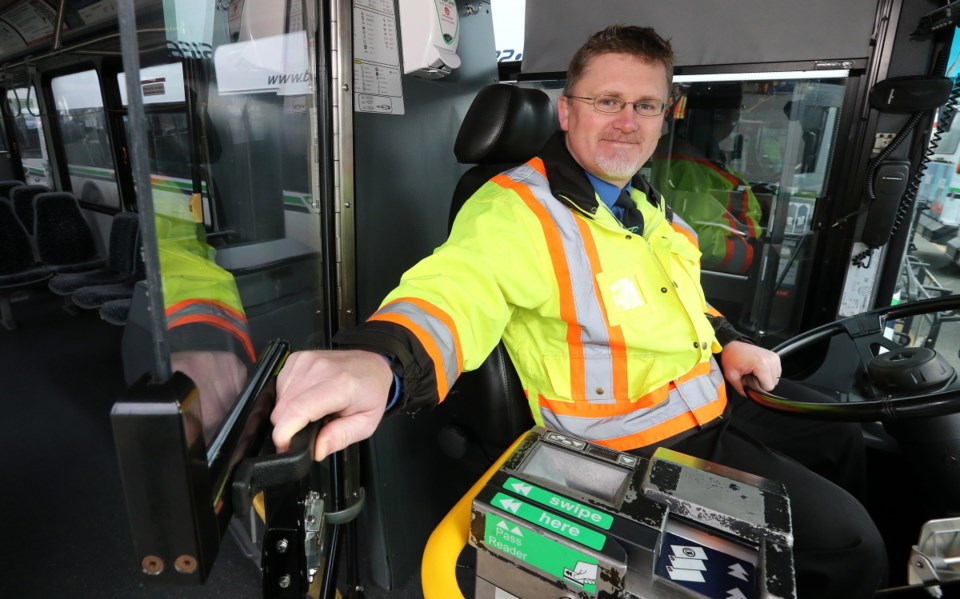The dangers bus drivers face from passengers who spit at them, threaten them and commit acts of violence have prompted a pilot project that shields B.C. Transit operators from riders.
The project, which begins today in Victoria and the Lower Mainland, will test purpose-built barriers that separate driver’s seats from passengers.
Riders taking bus No. 9375 until late July will notice a clear barrier around the driver’s seat area on about 15 routes.
The drivers will test how the partition works with different sight lines, and road, light and capacity conditions. They will also assess ventilation and ease of communication and exit. B.C. Transit is also asking passengers for their opinions.
The project was initiated by WorkSafe B.C., with participation by B.C. Transit and Unifor Local 333, which represents 550 operators.
In the past three years, there have been 126 dangerous incidents involving B.C. Transit drivers in Greater Victoria, said spokeswoman Meribeth Burton.
Union president Ben Williams said the heavy door frame built around thick “Gorilla Glass” looks good to him. (The Lower Mainland prototype will try flexible acrylic glass.) “It’s going to provide the protection that’s needed,” he predicted, saying there is “absolutely an increased need for protection.” One bus driver in Vancouver who was sucker-punched in 2010 has never returned to work, he said.
It’s important the barrier not be cage-like and the prototype built by Bentech in Philadelphia is not, he said.
People might assume that a lot of assaults on drivers occur late at night but it’s more common at peak hours on weekdays, he said.
WorkSafe dealt with 416 time-loss claims from bus drivers across the province from 2004 to 2013, including 39 for serious injuries, said spokesman Scott McCloy.
That resulted in more than 27,000 work days lost and more than $8.1 million in claims paid out. Included were 33 claims in Greater Victoria from B.C. Transit drivers.
“That’s 33 too many,” McCloy said. “Bus barriers are in lots of transit operations in the U.S. This would be a first for British Columbia.”
Transit buses in Edmonton and Winnipeg already have barriers for drivers.
The union is awaiting imminent passage of Bill S-221 by the House of Commons that would allow anyone interfering with a transit driver to be charged with aggravated assault rather than a simple assault, which seldom results in punishment, Williams said.
The prototype barrier costs about $5,000, which is more than an individual unit would normally cost, said B.C. Transit safety director John Palmer.
After the pilot program is complete, the information collected will be used to determine whether the barrier is effective and whether buses should be retrofitted or barriers limited to new buses coming on stream.
“I would imagine it would be a relatively quick decision,” Palmer said. The prototype is open to change both in design and manufacturer, he added.
Passengers are invited to comment on the barriers by emailing transitinfo@bctransit.com, calling 250-382-6161 or via bctransit.com.



